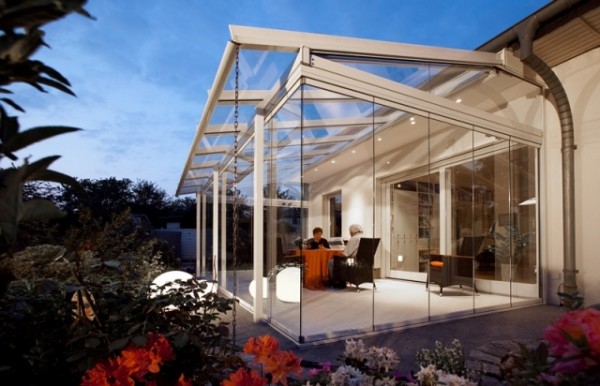When it comes to adding more space to your property, a bespoke conservatory is the most logical choice. You can create a design that is perfectly suited to you and your needs, an ideal place to entertain guests or let the youngsters run around. It also ensures that your new extension works seamlessly with the style of your home.
Before you start dreaming of days spent relaxing in your conservatory as the sun streams in through the windows, it’s vital that you consider planning permission. The rules relating to your property will almost certainly shape your extension plans, so the sooner you get up to date with the relevant regulations, the better.
These rules can seem very complicated and they differ depending on property type. Although your architect will be able to advise you thoroughly on what kind of permission is required, the two main rules relate to the size of the planned construction.
The size of the conservatory
- No more than half the area of the land surrounding the original house can be covered by additional buildings. Although at first glance this looks relatively simple, the term ‘original house’ refers to the house as it was first built, or as it stood on the 1st of July 1948 for properties built before this date. This means that if your home already has an extension, it could limit your conservatory plans.
- Along with this requirement, conservatory builds are restricted depending on the kind of property. For a detached house, it must not extend more than 8 metres past the end of your home. For all other properties, this limit is 6 metres.
Larger projects
If you’re planning to construct a conservatory that’s between 4 and 8 metres on a detached property or 3 and 6 metres on any other property, you’ll need to follow a process that takes your neighbours into account.
- Firstly, you are required to notify your local planning authority – this can be done free of charge.
- After this, the planning authority will contact your neighbours in adjoining properties or who are directly next door to your property.
- Your neighbours then have the right to object to your plans within 21 days.
Height of the conservatory
Along with these regulations are more specific ones that, while not as limiting, will still need to be taken into account before any work can start.
- The extension cannot be higher than the highest part of the property roof. This is something that will certainly need considering if you own a bungalow.
- The maximum allowed height of a single-storey rear extension is 4 metres.
Location and style of the conservatory
Other regulations focus on where you plan to build your conservatory:
- Any side extension must be single storey and the width can be no more than 50% of the original house – again defined as the size of the property when it was first built.
There are also restrictions placed on the style of the extension:
- Any extension cannot include a veranda, balcony or raised platform, as these require separate legislation.
- Designated land – defined as national parks, conservation areas, Areas of Outstanding Natural Beauty and World Heritage Sites – means no permitted development for rear extensions of more than one storey, no side extensions and no cladding of the exterior.
It may seem like a lot to get to grips with, but if your conservatory doesn’t meet these conditions you’ll have to submit a full planning application to the UK’s Local Building Authority. As this costs around £150, it’s something you’ll most likely want to avoid. Once you’re all clued up on the in and outs, you can start looking forward to relaxing in your very own comfy conservatory.
Mark Caulfield is the Founder of bespoke conservatory designers The Caulfield Conservatory Co based in Harrogate.
